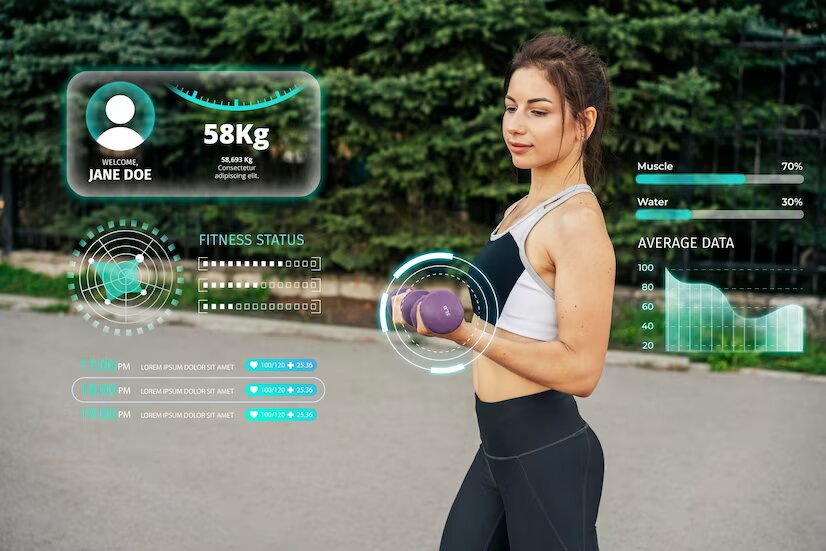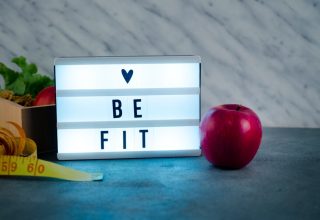How To Start Your Way In Innovative Fitness Tracker App Development In 2023
Fitness trackers are becoming more and more popular. You can apply wearable technology to track your health, the steps you take every day, and your sleep. If you decide to build a fitness tracker app, start with this guide.
We’ll show you how to build a fitness-tracking app and describe the ins and outs of fitness tracker app development.
Contents
What Features Should You Include When You Create A Fitness-Tracking App?
Fitness tracking app development requires building a number of both very simple and very complex features, including:
- The possibility to create a profile that includes a user’s personal information like name, age, gender, height, and weight.
- Tracking lets users track their fitness progress, like the volume of steps taken, calories burned, and distance covered.
- A fitness app should allow users to set fitness aims, such as weight loss or muscle gain, and track their progress toward those goals.
- Personalized recommendations allow users to receive personalized workout plans and nutrition recommendations based on their fitness goals and preferences. It’s a great way to keep users engaged.
Types Of Fitness Apps

You should consider several types of fitness apps available in the industry, each with its unique features and benefits, including:
Workout Apps
Workout apps are designed to provide users with workout plans and exercises that they can do at home or at the gym. These apps often come with instructional videos, workout timers, and progress-tracking features.
Nutrition Apps
Nutrition apps are designed to help users track their calorie intake, macronutrient distribution, and water intake. These apps often come with a food diary feature, which allows users to log their meals and track their progress toward their nutrition goals.
Meditation Apps
Meditation apps are designed to help users manage their stress levels and improve their mental well-being. These apps often come with guided meditation sessions, breathing exercises, and mindfulness exercises.
Wearable Apps
Wearable apps are designed to work with fitness trackers and smartwatches. These apps often come with advanced tracking features, like heart rate tracking and sleep monitoring.
How To Build A Fitness Tracker App
Now that you met the basics, you can start the fitness-tracking app development process:
1. Define Your Target Audience
The first step in building a fitness app is to define your target audience. You need to know who your app is for, what their fitness goals are, and what characteristics they would like to see inside a fitness app. Once you realize more about your target, you can have focus groups or conduct surveys to refine your features.
2. Choose A Development Platform
The following step is to select a development platform. There are several variations available, such as iOS, Android, and web-based apps. You can also use cross-platform development tools that work on both iOS and Android to increase your market.
3. Choose A Technology Stack
Once you have chosen a development platform, you need to choose a technology stack. A technology stack is a composition of technologies that are used to build an app. It includes programming languages, frameworks, libraries, and databases.
4. Develop A Minimum Viable Product (MVP)
An MVP is a fundamental version of your app that has only the essential features. It’s a great way to test your app’s market fit and get feedback from users. Once you have defined your target audience, choosing a development platform, and a technology stack, it’s an hour X to develop a minimum viable product (MVP).
5. Design Your User Interface
Once you have developed your MVP, it’s time to design your user interface. Your user interface should be intuitive and user-friendly. It should be straightforward for users to navigate and find the features they need.
6. Test Your App
Testing is a crucial step in building a fitness app. You need to test your app thoroughly to ensure that it’s working as expected. You can use beta testers to test your app and get feedback on its features and functionality.
7. Launch Your App
Once you have tested your app and made any necessary changes, it’s time to launch it. You can launch your app on the app store or Google Play Store.
8. Market Your App
The final step in building a fitness app is to market your app. You should build a marketing strategy that will help you reach your target audience. You can use social media, influencer marketing, and paid advertising.
That’s all you need to know to build a fitness tracker app of your own! Best of luck!
Read Also:
- 4 Ways To Keep The Ovaries Healthy + Best Foods To Eat
- How To Take Care Of Your Health During The Vacations
- 9 Benefits Of Peas For Health And Nutrition


